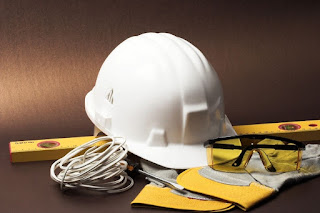Level 3 NVQ Certificate in Occupational Health and Safety Unit: Monitor procedures to safely control work operations Question: Explain...
Level 3 NVQ Certificate in Occupational Health and Safety
Unit: Monitor procedures to safely control work operations
Question:
Explain employers’ and employees’ legal responsibilities for health and safety in the workplace.
Answer:
Summary
of Employer’s responsibilities:
· make the workplace safe.
· prevent risks to health.
· ensure that plant and machinery is
safe to use.
· ensure safe working practices are
set up and followed.
· make sure that all materials are
handled, stored and used safely.
· provide adequate first aid
facilities.
Summary
of Employee’s responsibilities:
· Take reasonable care of their own
Health & Safety.
· Take reasonable care of someone
else's Health & Safety.
· Use safety provisions correctly.
· Co-operate.
Hazard is something that can cause harm OR Anything with the potential to cause harm to people, equipment or property, e.g. electricity, chemicals, working up a ladder, noise, a keyboard, a bully at work, stress, etc.
Risk is the Combination of overall probability (frequency of occurrence) of harmful effects induced by a hazard and the severity of resulting effect. Some calculations may include "exposure. For example, working alone away from your office can be a hazard. The risk of personal danger may be high. Electric cabling is a hazard. If it has snagged on a sharp object, the exposed wiring places it in a 'high-risk' category.
Control
is Used to prevent harm to people, equipment, environment, mission performance
and reputation such as implementing the hierarchies namely; Elimination, Substitution,
Engineering control, Signage/warnings and/or administrative controls, Personal
protective equipment
The type
of information available from reports and records covering the workplace are;
Keeping
up-to-date with health and safety regulations and workplace instructions,
making sure that information is from reliable sources. Conducting monitoring of
the workplace at agreed intervals and in accordance with workplace
instructions.
Confirming
that workers are health and safety competent as defined in their job role and
that identified health and safety training needs have been met.
Communicate
workplace instructions and receive feedback. For example, direct observation of
the workers in the workplace, witness testimony by colleagues and line managers
of the workers successful performance of activities in the workplace, documentary
and other product-based evidence, questions and, professional discussion.
Also, the
Accident Book report and Reporting of Injuries, Diseases and Dangerous
Occurrences Regulations 1995 (RIDDOR) reports, if applicable, treatment
records, health and safety committee minutes where the accident was discussed,
health and safety training records, service or maintenance records of the work
equipment, all relevant risk assessments.
It will
also be important to ensure the availability of Individual responsibility
records and report, Health and safety rules, Correct work procedures, Employee
orientation records, Training reports, Workplace inspections reports, Reporting
and investigating accidents/incidents, Emergency procedures records, Medical
and first aid, Health and safety promotions and Workplace specific items.
The
importance of evaluating information from reports and records is because, it
ensures an up-to-date with health and safety regulations and workplace
instructions, making sure that information is from reliable sources.
It also
helps the conduct of monitoring of the workplace at agreed intervals and in
accordance with workplace instructions and confirm that workers are health and
safety competent as defined in their job role and that identified health and
safety training needs have been met, while communicated workplace instructions
are given and feedback is received.
Also, it
gives room to maintain accurate records of any workplace risks, check other
people are aware of the hazards/risks and know the action(s) to be taken to
minimise them, confirm that appropriate precautions to control risks have been
agreed with the people responsible for health and safety. It also provides
review to make sure all recommended action has been taken, such as reporting
any conflicts that still exist between workplace and legal requirements.
On the other hand, it provides employers and employees legal responsibilities for health and safety which may also refer to following safe systems of work, method statements, risk assessments, correct use of materials, substances, plant and equipment. This Legal requirements could relate to HASAW Act, Management of Health and Safety Regulations, COSHH Regulations, LOLER, Workplace Regulations, PPE regulations, Noise, Fire, Manual Handling and/or other regulations including those specific to the workplace (food, offshore, mines and quarries) and finally identify Information such as training and qualifications of individuals and groups which could include qualitative and quantitative on lost time accidents and incidents, costs.

No comments